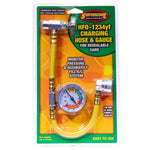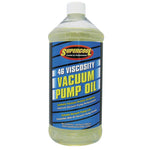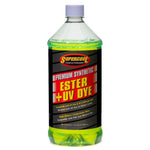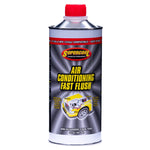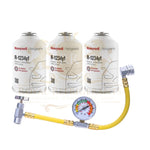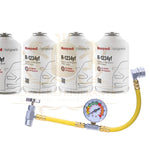You have no items in your shopping cart.
Everything You Need to Know About 134A for HVAC and Automotive Applications
In the world of HVAC and automotive air conditioning systems, refrigerants play a vital role in cooling performance and energy efficiency. One of the most widely used refrigerants over the past few decades is R-134a (commonly referred to as 134A). Known for its effectiveness, stability, and wide compatibility, R-134a remains a standard choice for many air conditioning and refrigeration systems. This article explores everything you need to know about 134A, including its properties, uses, benefits, and considerations for both HVAC and automotive applications.
What Is 134A Refrigerant?
R-134a, or 1,1,1,2-Tetrafluoroethane, is a hydrofluorocarbon (HFC) refrigerant widely used as a replacement for R-12, a chlorofluorocarbon (CFC) phased out due to its ozone-depleting properties. R-134a does not contain chlorine, making it non-ozone-depleting and environmentally safer compared to older refrigerants. It became the industry standard for automotive air conditioning systems in the 1990s and is still used extensively in various refrigeration and HVAC systems.
With a chemical formula of C₂H₂F₄, R-134a is a colorless, non-flammable gas under normal atmospheric conditions. It has excellent thermodynamic properties, making it efficient for heat transfer and cooling in a wide range of systems.
Key Properties of R-134a
- Chemical name: 1,1,1,2-Tetrafluoroethane
- Boiling point: –15.34 °F (–26.3 °C)
- Molecular weight: 102.03 g/mol
- Ozone depletion potential (ODP): 0
- Global warming potential (GWP): ~1430
- ASHRAE safety classification: A1 (non-toxic, non-flammable)
R-134a’s zero ODP and non-flammable nature make it safer for the environment and users, while its thermodynamic performance ensures reliable cooling in both stationary and mobile systems.

Applications of 134A in HVAC Systems
R-134a is used in a variety of residential, commercial, and industrial HVAC applications, particularly where moderate cooling capacity is required. It is commonly found in:
- Chillers: Used in medium-temperature chillers and water-cooled systems.
- Refrigeration equipment: Employed in commercial refrigeration units, display cases, and beverage coolers.
- Air conditioning systems: Applied in small residential and commercial air conditioning units.
Although newer refrigerants with lower global warming potential are entering the market, R-134a remains a popular option due to its availability, proven performance, and wide compatibility with existing equipment.
Applications of 134A in Automotive Air Conditioning
R-134a has been the industry standard refrigerant for automotive air conditioning systems for more than two decades. It replaced R-12 as the primary refrigerant in passenger cars, trucks, and other vehicles because it offers excellent cooling performance without harming the ozone layer.
Key reasons for its use in automotive AC systems include:
- Efficient cooling: Delivers fast and reliable cooling in hot conditions.
- Non-corrosive: Compatible with most system materials and lubricants.
- Widespread availability: Easy to source and service in most parts of the world.
While newer alternatives like R-1234yf are gradually replacing R-134a in modern vehicles due to environmental regulations, many vehicles on the road today still rely on R-134a for their AC systems.
Advantages of R-134a
- ✅ Non-ozone-depleting: Safe for the ozone layer compared to older refrigerants.
- ✅ Non-flammable and non-toxic: Safe to handle and use in most applications.
- ✅ Efficient cooling performance: Delivers excellent thermodynamic efficiency.
- ✅ Widely available and cost-effective: Easy to source and affordable.
- ✅ Proven reliability: Used successfully in millions of systems worldwide.
Environmental Considerations and Future Alternatives
Although R-134a is much safer for the ozone layer than older refrigerants like R-12, it still has a high global warming potential (GWP ~1430). Because of this, many countries are phasing it down under environmental regulations such as the Kigali Amendment to the Montreal Protocol.
Newer alternatives with lower GWP are being introduced, including:
- R-1234yf: A hydrofluoroolefin (HFO) refrigerant with a GWP of less than 1, now widely used in new automotive systems.
- R-513A: A blend with significantly lower GWP, suitable for some HVAC systems.
Despite these changes, R-134a continues to be used in many existing systems, and its compatibility and performance make it an ongoing choice for maintenance and retrofits.
Safety and Handling Tips
When working with R-134a, proper safety measures are essential:
- Always handle cylinders in well-ventilated areas.
- Wear safety goggles and gloves to prevent contact with skin or eyes.
- Avoid mixing R-134a with other refrigerants, as this can damage the system and reduce performance.
- Use proper recovery and recycling equipment when servicing systems.
Following these precautions ensures safe handling and compliance with environmental regulations.
Conclusion
R-134a has been a cornerstone refrigerant for HVAC and automotive air conditioning systems for more than 30 years. Its excellent cooling efficiency, non-ozone-depleting properties, and proven reliability have made it a trusted choice across the industry. While environmental regulations are driving the adoption of newer, lower-GWP alternatives, R-134a remains widely used in existing systems and will continue to play a key role in cooling technology for years to come.
Whether you’re maintaining an older vehicle’s air conditioning system or servicing commercial HVAC equipment, understanding R-134a’s properties, benefits, and considerations helps ensure optimal system performance and compliance with evolving environmental standards
 English
English

